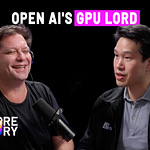For the past decade, the scientist Suzanne Gildert has been working to imbue robots and AIs with new skills. She co-founded a pair of start-ups - Kindred and Sanctuary AI - that strove to add intelligence to robotic arms and bodies. The results were robotic arms that could do factory work at Kindred and then an upscaled, much weirder version of the technology at Sanctuary.
In the background, Gildert spent much of her time longing to really bring robots and AIs to life. She’s been an advocate of a very sci-fi future where humans and androids go about the world alongside each other and share in their day-to-day lives. Gildert has pined for a future in which our metal companions have thoughts and feelings that resemble ours.
Her latest start-up - Nirvanic Consciousness Technologies Inc. - is an attempt to bring those hopes and dreams to fruition.
Gildert contends that current AI systems based on large language models are likely too limited to result in consciousness (or something like it) arising. Her theory is that the roots of consciousness may actually come from AI models derived from the quantum realm where physics gets funkier.
Gildert will forever be better than I am at explaining her hypothesis. So get comfy, open your mind and have a listen.











